Luxury, power, high jewelry and tragedy. All of this came into play on the “electrifying night” that took place this Thursday at Sotheby’s in Geneva. As is usual in this circuit, the identity of the person who won one of the hottest pieces of recent weeks is unknown, but it is known that it was a woman, and that she paid 4.26 million Swiss francs (about 4.55 million euros) for a jewel. whose complexities dictated fundamental changes in the fabric of European history (or at least helped precipitate pre-announced destinies).
A buyer who considers himself simply the faithful guardian of something precious that will one day fall into other hands, and into another’s neck, or simply into another safe where it will remain well guarded. “I am exceptionally happy to have won this lot; but It doesn’t belong to me, I’m just the guardian until the next person arrives.’”, the person in question confessed to Andrés Blanco Correal, a Sotheby’s jewelry specialist, after selling the necklace. “There is obviously a niche in the market for historic jewelery with fabulous provenances. People not only buy the object, but they buy the entire history that is linked to it,” describes Correal, quoted by Reuters.
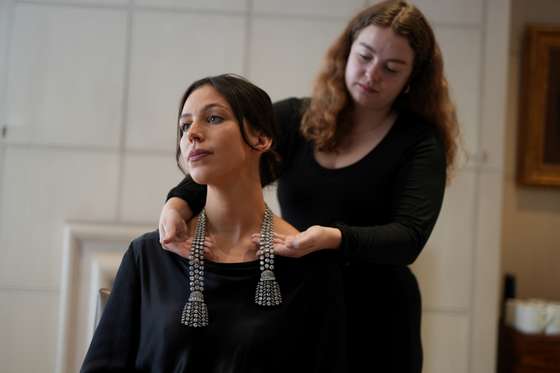
A promotional image of the auctioneer, who exhibited the piece on the eve of this Thursday’s auction © Getty Images
What is at stake is the angelsay necklaceor Anglesey Diamond Négligé, one of the rarest antique diamond necklaces that was on display at the central London auction house, valued at around two million, before being presented for the first time at auction in November this year. Created in the years leading up to the French Revolution, around 1770, it resembles a handkerchief and can be worn open or tied in front. The stones from the original piece were later sold piecemeal on the black market, many of them untraceable. In this case, experts point to correspondence arriving in the United Kingdom.
The current jewel was part of the Marquis of Anglesey’s family collection for a century, until it was sold to a private collection in the 1960s, having arrived at Sotheby’s from Asia. It is believed to have been used at the coronations of George VI and Elizabeth II by members of the clan, but the most important link in its history extends to Marie Antoinette, the Austrian woman who became the wife of French King Louis XVI, both of whom who were guillotined in 1793, during the Revolution.
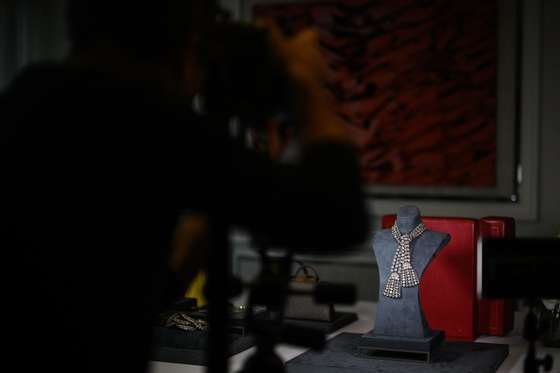
Estimated at two million, it more than doubled in the session last Thursday afternoon in Geneva © Getty Images
Celebrated as Collier de La Reine, the original necklace, from which the diamonds were derived, helped precipitate the queen’s downfall, becoming forever associated with the scandal that worsened the image of luxurious living associated with the occupants of the throne. A trial after what became known as the Diamond Necklace Case It would exonerate Marie Antoinette of having spent a lot to commission the jewel, but the damage had already been done, fueling the fall of the French monarchy.
The Palace of Versailles frames the episodes dating back to 1784-85 and involving Cardinal Louis de Rohan, whose decadent behavior had earned him the contempt of the queen, who, following his mother’s advice, excluded him from her restricted circle. . After his return from Vienna as ambassador, the cardinal attempted to regain Marie Antoinette’s favor. To do so, he relied on the intervention of a trickster, Jeanne de Valois-Saint-Rémy, self-proclaimed countess de la Motte (1756-1791), who organized a meeting between Rohan and a female figure posing as the king’s wife, calming her down. . he. or about his position in court.
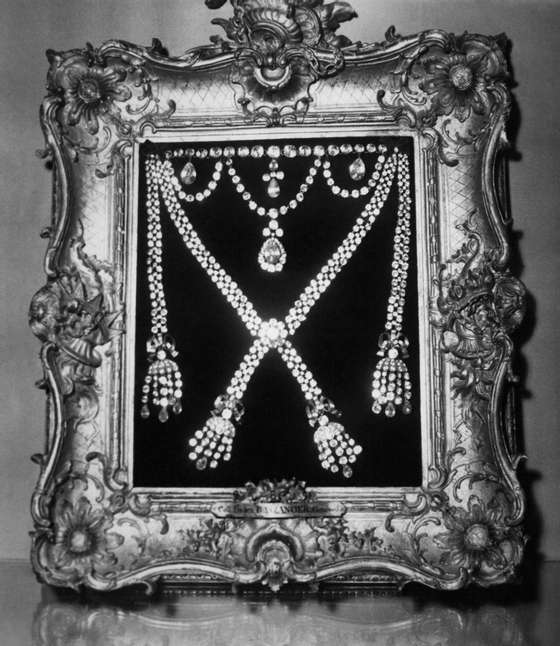
An image of the original jewel, shown in the 1950s during an exhibition in Versailles © Getty Images
This is where the exuberant necklace comes into play that the Crown jewelers, Böhmer and Bassenge, tried to sell, without success, some time ago, and which required an exorbitant investment. Originally designed for Madame du Barry, who went down in history as the mistress of Louis XV, it contained more than 650 diamonds and 2,800 carats. But when the monarch dies, the lavish order is left in no man’s land. When it was presented to the next lord, Louis XVI, still in 1782, the queen showed no interest. La Motte is not ashamed of this intricate network. The cardinal’s lover, Jeanne also has the services of another love connection, Armand Gabriel Rétaux de Villette, a forger who supposedly produced letters supposedly written by the queen in which she expressed her desire to possess the necklace to Rohan. The cardinal made himself available to the Austrian woman to act as an intermediary, committing to buy the piece and pay it in four installments over two years.
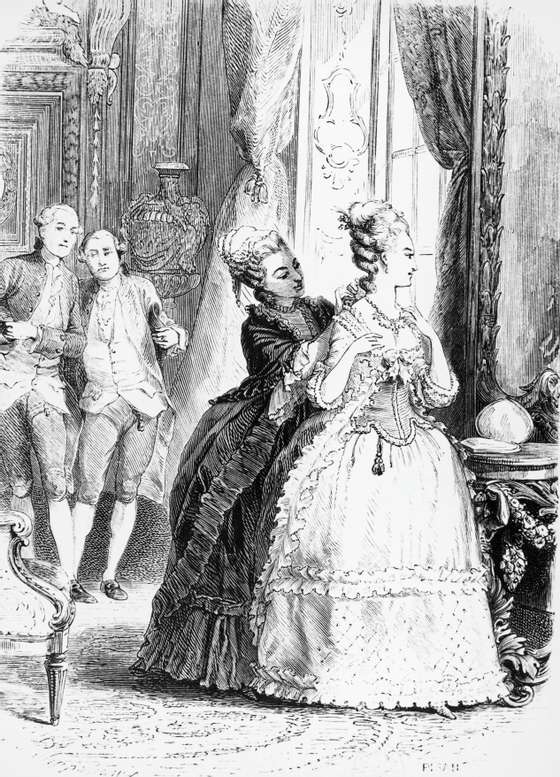
An illustration of the queen taken from the serial published by Dumas on the necklace case © Getty Images
For Böhmer and Bassenge, the plan seemed perfect to finally ship the piece they had invested so much in. On February 1, 1785, the cardinal received the jewel and gave it to the countess, who hurriedly disappeared with her accomplices. In turn, the jewelers waited, without results, for the next sections. Böhmer even wrote to the queen, who, ignorant of the matter, ignored the letter. The jeweler insists in a new letter, now addressed to one of the maids, that she inform Marie Antoinette of the curious case, who finally discovers the deception. One day when he is preparing to celebrate mass in the Royal Chapel, Rohan receives a summons from the king and ends up being imprisoned in the Hall of Mirrors, while the court watches the events astonished.
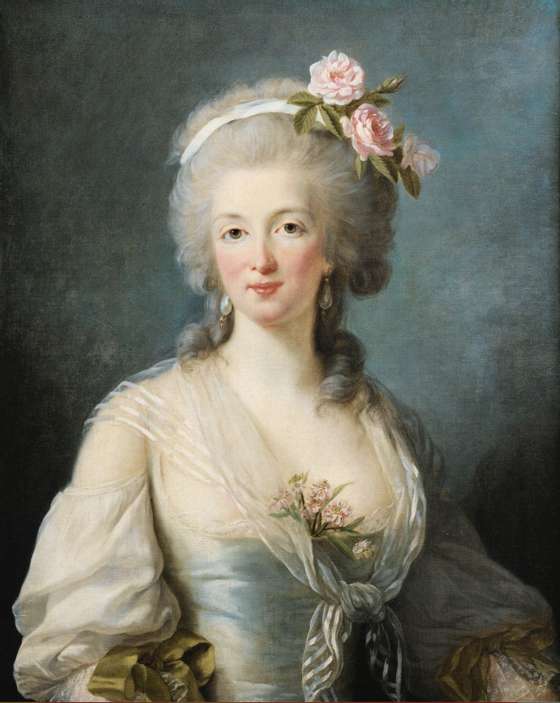
Jeanne de Valois-Saint-Rémy died at only 35 years old, but she left a trail of legendary plans
Brought to the Parliament of Paris in May 1786, the cardinal was finally declared innocent. While Jeanne de La Motte and her accomplices are caught, tried and branded with a hot iron, with a V for voleuse (thief). His story would make another feature film. Sentenced to life imprisonment in Salpêtrière, she managed to escape and travel to London disguised as a child. In the United Kingdom, in 1789, he published the book “Memoires Justificatifs de La Comtesse de Valois de La Motte”, trying to justify his actions and blame Marie Antoinette. While the cardinal spent the rest of his life in exile, Joan died on August 23, 1791 (two years before the queen), in the British capital, after falling from a hotel room while fleeing creditors.
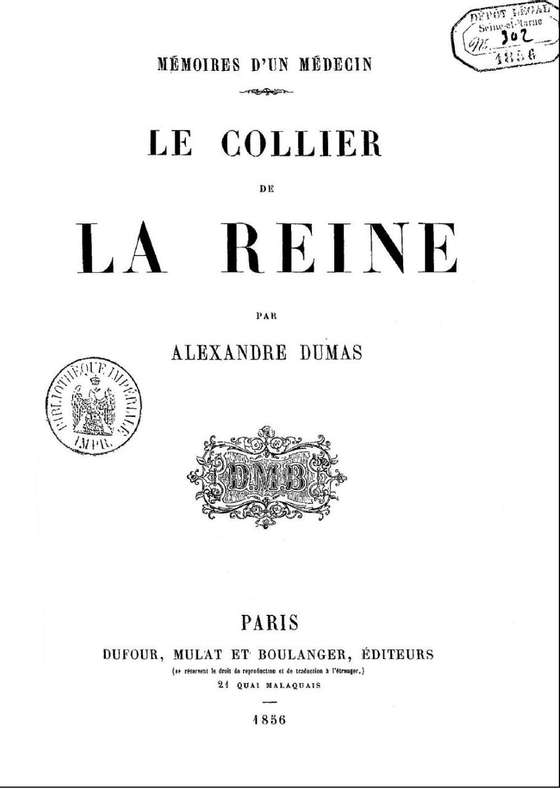
An edition of the work launched by Dumas on the famous case that shook France
The saga generated such a frenzy that several decades later, between 1849 and 1850, Alexandre Dumas would sign the novel. The queen’s necklacea plot loosely inspired by the case that lit up political and judicial headlines in those hot years.
If Marie Antoinette would never recover her already weak reputation, tarnished by a new scandal, the fate of the jewel is uncertain, which has given rise to countless speculations over the years. One of the hypotheses put forward is that the countess sold the essential part of the piece to an English jeweler, William Gray, in the belief that part of the diamonds would become another fabulous creation, the Sutherland Diamond Rivière necklace, which remained in possession. . of the Sutherlands in the 20th century and it would be another beautiful story. Another argument holds that it was acquired in the late 18th century by the first Duchess of Sutherland, then married to the British ambassador to France.
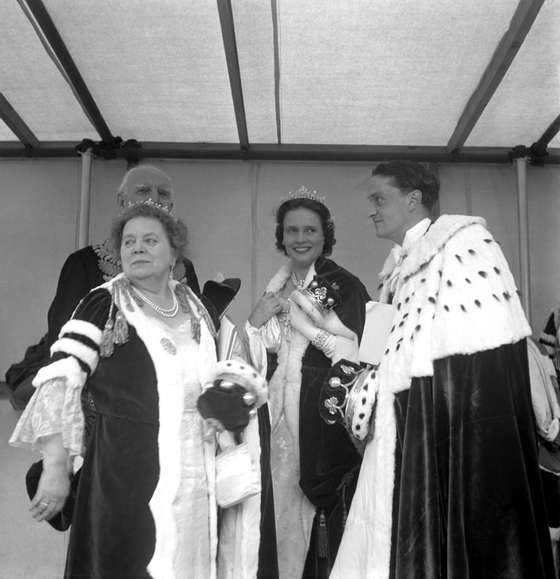
The Marquesses of Anglesey, right, at the coronation of Elizabeth II, in Westminster Abbey © Getty Images
In the 1940s, for example, the famous social chronicler Henry Channon maintained that part of the diamonds linked to the case shone both on the neck of Clare (1903-1998), second wife of the fifth Duke of Sutherland, and on the rest of these . rows, with emphasis on the tassels, were then in the possession of Marjorie Anglesey, who died in 1946.
It is not known exactly when the Marquesses of Anglesey acquired the Diamond Négligé, but at least in 1937 it was worn by the 6th Marquess of Anglesey with the Anglesey tiara, shining in a series of portraits taken by Cecil Beaton around the king’s coronation. . . George VI, that year. Later, on June 2, 1953, it would be the turn of the seventh Marchioness, Shirley Paget, to attend the coronation of Elizabeth II, at Westminster Abbey, wearing the Anglesey Diamond Négligé that has now been sold, and of which the family fell apart in 1976, finances in decline.
Source: Observadora
